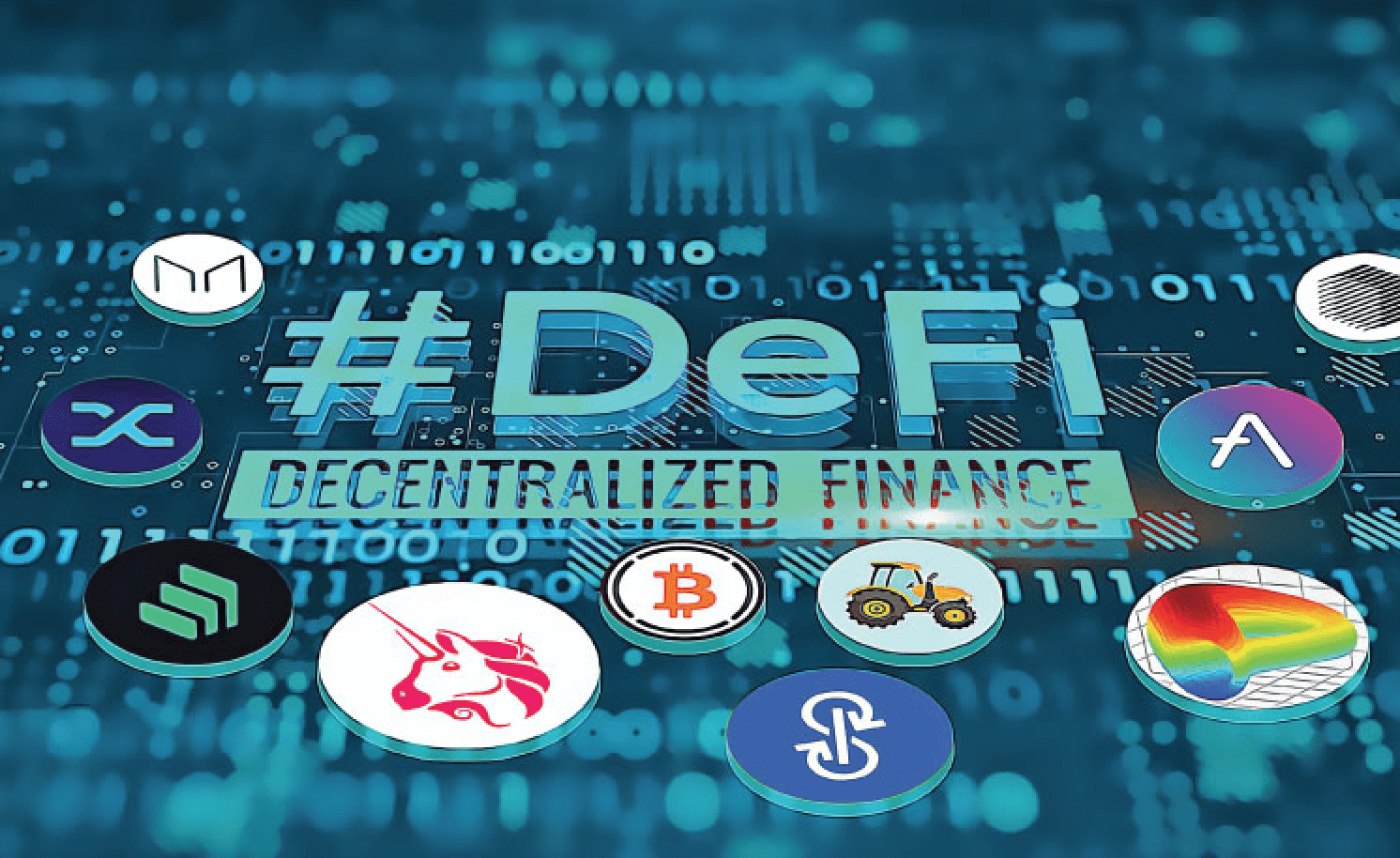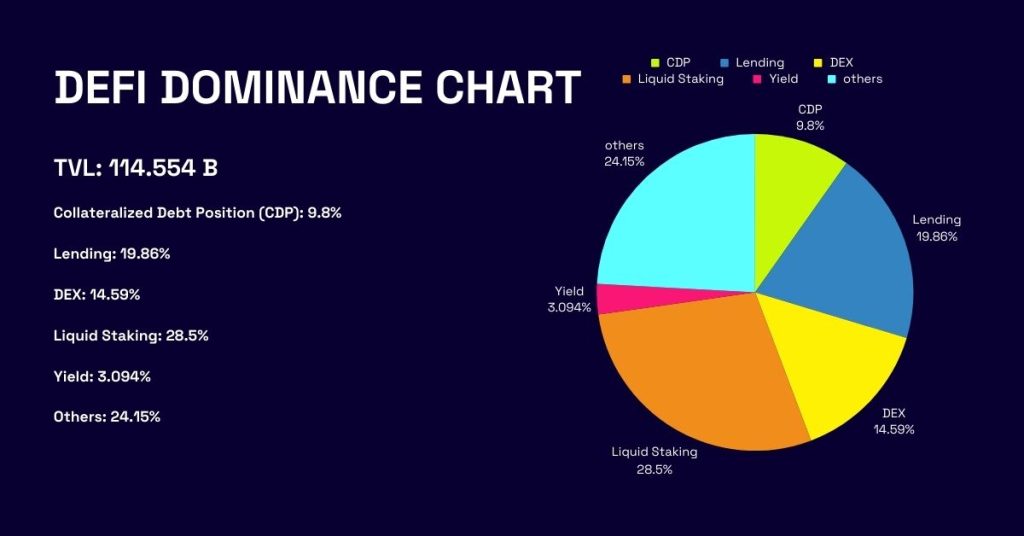Recent days have seen a dramatic change in the cryptocurrency industry. The DeFi dominance metric has dropped to its lowest position in three years. This metric measures the DeFi market cap as a proportion of the global crypto market capitalisation. This change stands in sharp contrast to the sector’s prior expansion. It exemplifies how the crypto environment is evolving.

The DeFi index fell precipitously from Monday’s 3.82% to Friday’s 2.84%. Thus, following a market-wide sell-off and relief rally last week. Early January 2021, the sector had a substantial appreciation leading up to the celebrated “DeFi summer” of that year. With such an event, this slump is the worst position for DeFi domination.
The Decline of DeFi Dominance
Since September 2022, when it was at 4.8%, the dominance of DeFi has been steadily declining. Although there have been few upturns, the trend is generally negative. Decentralised finance projects continued to lose market share in 2024 when their dominance had dropped to 4.47%.
Memecoins, in particular, have performed better than the market in 2024. Institutional investors have taken a keener interest in Bitcoin and Ethereum since their ETFs were introduced. To this day, most DeFi tokens are still floundering around. They are trying to regain the ground they lost in the market.

DeFi dominance has dropped by 29% so far this year due to this change in market dynamics. Few DeFi tokens have attracted market attention; MKR is one such exception. It outperformed its peers for a while thanks to fundamental drivers and storylines. The majority of DeFi tokens, including MKR, have lagged behind Bitcoin so far this year.
Factors Contributing to the DeFi Dominance Decline
Investors and market players have shown little enthusiasm for DeFi coins for some reasons. More established DeFi initiatives have lost focus and funding due to the memecoin mania still going strong. Memecoins appear to provide the possibility of rapid, big returns, which market players are lured to despite the heightened risk.
Additionally, the fully diluted values (FDV) of some DeFi coins are relatively high. For investors concerned about token inflation in the future, this can be a turnoff. Many DeFi initiatives have private investor unlocking, which regular investors may view as exploitative and unwelcome. These unlocks might give the impression of having an unfair edge and frequently result in sales pressure.
The Changing Face of DeFi and How It Affects Market Domination
While DeFi dominance isn’t as it once was, it doesn’t mean it stopped evolving and innovating. Constant innovation in DeFi protocols and apps is resolving old problems. In addition, it is uncovering new uses for decentralised finance.
Improving the efficiency and scalability of layer-2 solutions is one area where the DeFi industry is experiencing growth. The Ethereum-based DeFi protocols have been beset with scalability and high petrol charge difficulties. These improvements seek to alleviate some of those issues. The solutions can reawaken interest in DeFi. Consequently, they can help to restore its dominance as they develop and become more widely used.

The growing use of bridge protocols and hybrid solutions to connect DeFi with TradFi is another development to observe. This coming together can attract new users and investors to the DeFi ecosystem. Therefore, it might reverse the present lows of DeFi dominance.
Conclusion: The Future of DeFi Dominance
The current level of DeFi dominance indicates a crypto market realignment and consolidation. The sector’s proportion of the total crypto market valuation has dropped significantly. Yet, it would be hasty to dismiss DeFi as a fad.
Everything that got people excited about DeFi in the first place is still valid. This includes access to financial services, more efficiency, and the possibility of financial inclusion. Maybe DeFi will be back on top again when the industry grows up and figures out how to deal with its problems.
Some factors will determine the future of DeFi’s supremacy. Such include changes in regulation, tech innovations, and the sector’s success in attracting and retaining customers. The degree of integration with other blockchain technologies like NFTs and the metaverse may affect its market position.
The role of DeFi and its market domination will undoubtedly be a subject of curiosity. It may spark controversy among market analysts, developers, and investors as the industry evolves. At this nadir of DeFi dominance, there are obstacles to overcome. However, there are also chances for development and innovation that can change the game in the future. Deythere is committed to keeping you updated on the latest trends and developments in the digital asset world.



















































































































